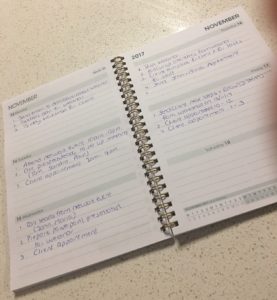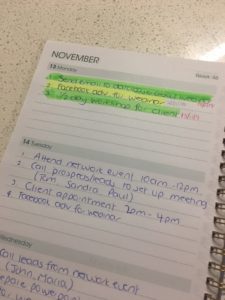
Distractions, going in different directions, doing too many things at once can all cause you to be BUSY and not be PRODUCTIVE. It’s easy to do, that was me years ago, coming up with excuses why I wasn’t getting things done, why the results I was getting were not what I hoped for. I was too busy being busy and spending less time planning and being focused. This was until I started to implement what I now call the Focus 123 strategy.
So what is the Focus 123 strategy? Well, it’s a SIMPLE strategy I use daily that keeps me focus on the day and includes actionable items that lead towards the goals of the business. If you have not set goals for your business you can click here for a free template to get started.
Tony Robbins has a quote, “Motion creates emotion.” When you start doing then you start noticing emotions. How many times have you procrastinated doing something on your ‘to do list’ but once you got started you couldn’t stop and you were really proud of the end results?
I know I have, for example, sitting down to write an article, picking up the phone to follow up prospects, creating the presentation for a speaking event I had, doing the marketing for a webinar I was running and doing my bookkeeping (my background is Accounting and I love my numbers). Think about a time you were in this position and how you felt once you got started.
So what should be on this list of 123? Focus on the top 3 things that will help grow your business and ensure you fulfil the needs of your clients. Top of the list should be:
- Following up prospects, making those calls. When adding this to your list make sure to include the names of the
 people you are going to call.
people you are going to call. - Deliver the service you promised your client. Be specific, what is it you need to do to service your client. For example, send business X a report on “recommendations to increase productivity in X’s business.”
- Then add items like administration, marketing, teamwork.
With the items on your list make sure to add a timeframe, for example with making the calls to prospects you can allocate 30 minutes in the morning say at 10am to make those calls.
Setting a timeframe gets you completing things and not dragging them out. It also minimises the procrastination to moving to the next item on your list. Remember, it’s not about how busy you are but how productive you are with your time.
You don’t have to limit your day to only 3 things to do, but these 3 things you list are MUST DO items. If you have other things you want to do, add them to your daily list but don’t do them until you have finished the top 3. If you’re a visual person as I am, I like to measure my productivity by highlighting things in different colours and using a different colour pen. What I mean by this is, once I complete an item on the list I would highlight it in GREEN. I would also then add the date of completion in red next to it.
 Now if you don’t complete one of the 3 items on your list, it remains unhighlighted, this way at a quick glance you can see what has not been completed. If you have started but not completed the item then highlight it in YELLOW. For those items not completed, write in pencil next to it when you plan on completing it. Then add it to your 123 list for the day you plan to do it.
Now if you don’t complete one of the 3 items on your list, it remains unhighlighted, this way at a quick glance you can see what has not been completed. If you have started but not completed the item then highlight it in YELLOW. For those items not completed, write in pencil next to it when you plan on completing it. Then add it to your 123 list for the day you plan to do it.
Give this a go and notice just how much you can achieve in a day.
Make sure to do this daily so that this becomes a DAILY HABIT. I know personally that when I chose not to do this, the focus becomes blurred. It’s now time to stop the blurred vision and to start getting clarity on what your day will look like.
To learn more DAILY HABITS to incorporate into your business click here to attend a free live online training on this week.
EmpowerBeyond – Business Performance Solutions, focusing on people, process, products and services and improving productivity and cash flow. www.empowerbeyond.com.au





